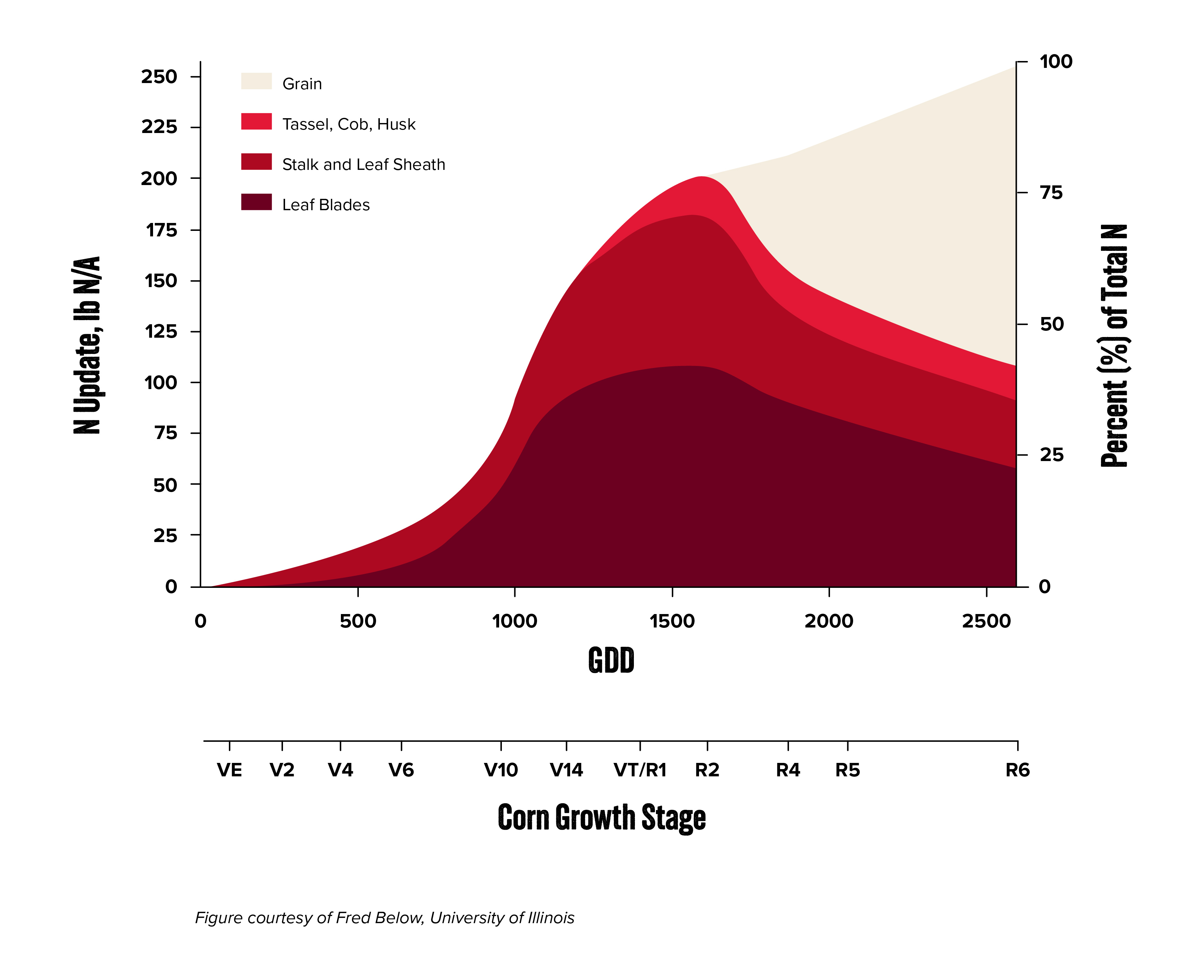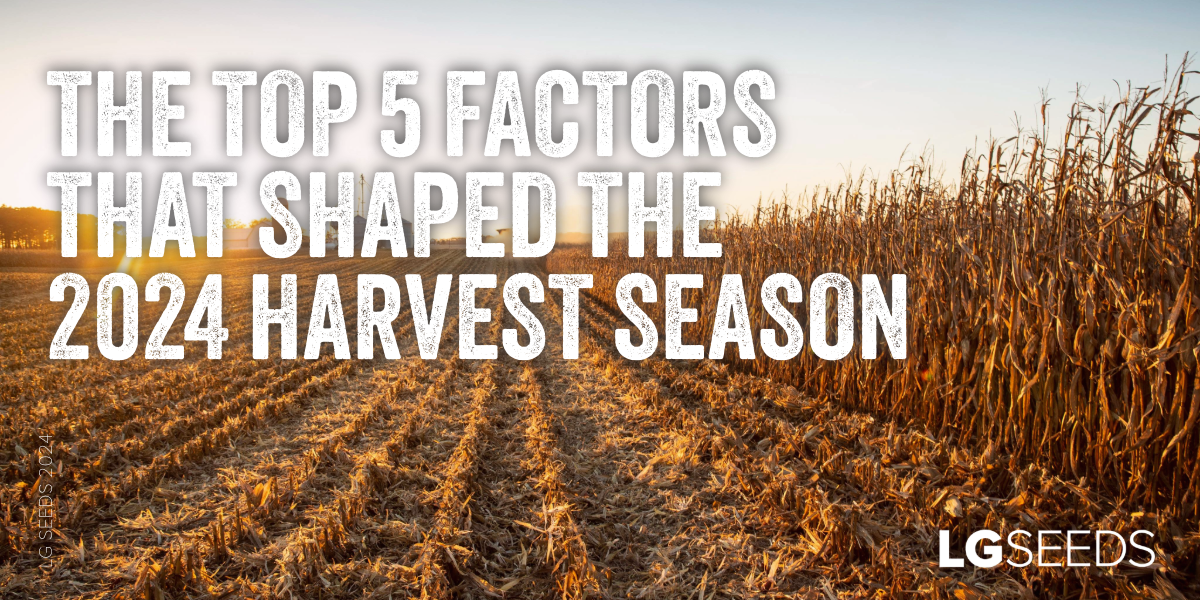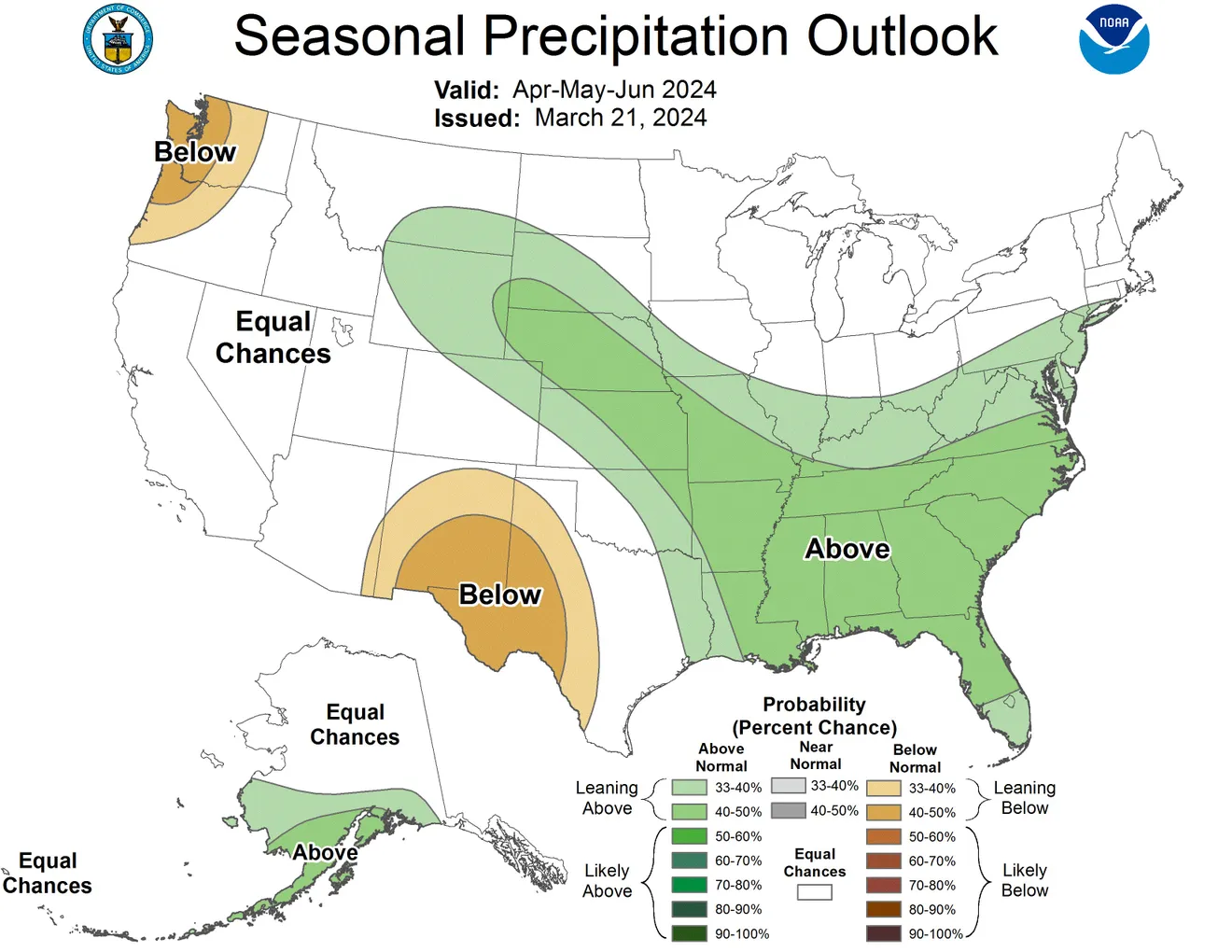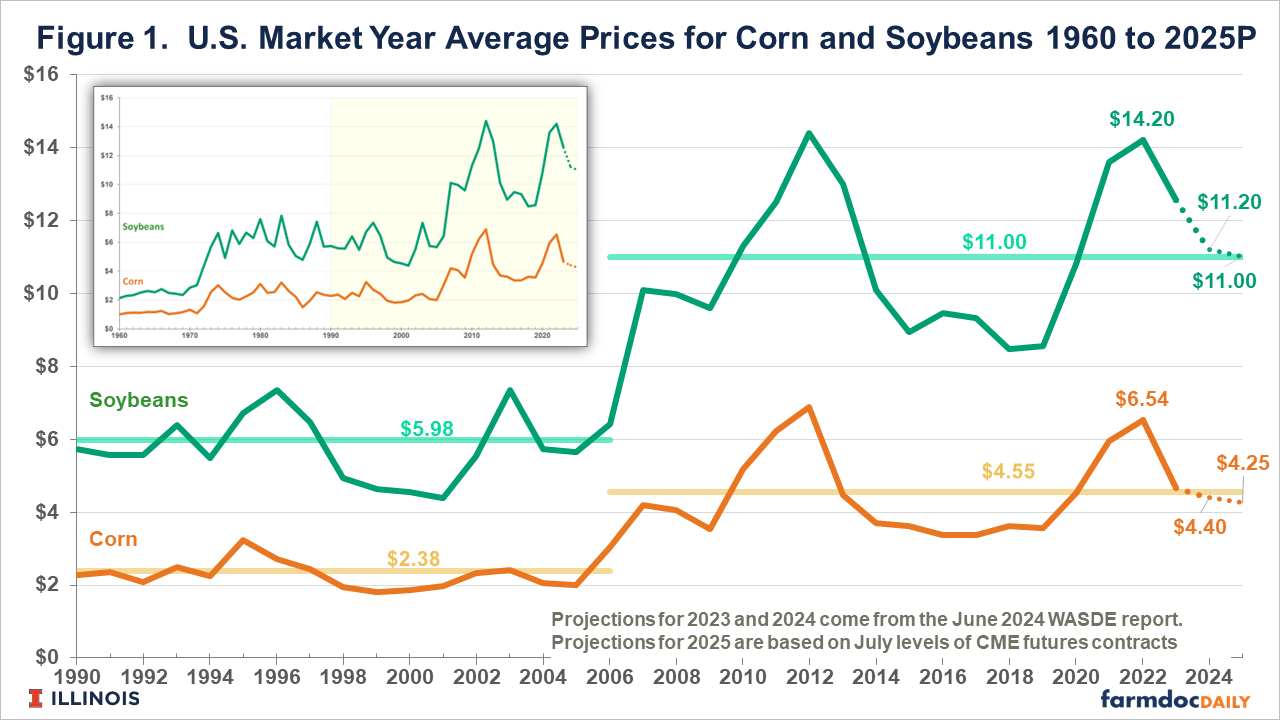AGRONOMICSUPPORT
YOU CAN TAKETO THE FIELD
The Top 5 Factors That Shaped the 2024 Harvest Season
With corn harvest in full swing in many areas, farmers nationwide are preparing to reveal the ultimate measure of their efforts — yield. Soon, they'll assess how different factors have shaped their results.
From environmental conditions to new technology, we’re keeping an eye on the top trends that could significantly impact harvest outcomes.
Key Takeaways:
- Water management issues, ranging from excessive moisture to drought, will likely lead to significant yield variability across regions.
- Nitrogen deficiencies and late-season diseases like southern rust and tar spot threaten yield potential, especially where management interventions were delayed.
- Fluctuating commodity prices and rising input costs may challenge farmers' profitability, making strong yields critical.
Here are our top five harvest anticipations for 2024:
1. Water – Too Much or Too Little?
Water management has been a defining factor in yield performance this season. In areas that experienced heavy rains early on, crops may have struggled with root development and nutrient uptake, leading to reduced plant resilience and potential yield loss. Excess moisture can also be more conducive for diseases and pests, further stressing crops.
Weather Outllook Map Sourced from the National Weather Service: https://www.weather.gov/media/bis/winter-outlook-2023-2024.pdf
Meanwhile, drier regions may have seen stunted growth or crop stress due to prolonged periods of drought, with plants struggling to maintain sufficient moisture for photosynthesis and nutrient absorption. This lack of water can cause reduced leaf area, smaller grains and a delay in crop maturity, which all further lower yield potential.
Farmers with irrigation systems or access to water management technologies may have had a buffer against these extremes. Still, moisture-related issues dominate the conversation. How moisture levels played out in your area could determine whether your harvest aligns with expectations — or falls short.
2. Nitrogen – A Critical Element for Yield and Stalk Strength
Corn nitrogen levels are key to high yields and healthy stalks, but achieving the right balance is an ongoing challenge. Too little nitrogen can lead to reduced plant vigor and yield, while too much can create weaker stalks prone to lodging, especially in high winds.

This year, we’re closely monitoring fields where nitrogen management was prioritized to assess its impact on yield outcomes and overall plant health. In areas with excessive moisture, many farmers were unable to get into the fields to sidedress their corn, which may have led to nitrogen deficiencies and ultimately a yield hit.
With proper nitrogen levels, farmers are more likely to see strong, healthy plants that stand tall through harvest. This maximizes their yield potential while minimizing crop risks.
3. Late Disease Pressure – A Growing Threat
Late-season disease pressure is a significant factor in how this year’s harvest will play out. When disease sets in late and protective fungicide treatments aren’t applied, spores spread unchecked and can cause plants to die prematurely. This prevents the corn ears and kernels from fully developing, ultimately limiting yield potential.
Southern rust in the southern U.S. and a mix of southern rust and tar spot in the north have been creeping into fields just as the crops are maturing. While many fields were able to avoid major losses with early detection and treatment, others may have lower yield potential.
Disease management this season will be critical for farmers hoping to minimize losses and maximize return on investment.
4. Commodity Prices – What Yield Means for Profitability
While yield is always the primary focus during harvest, the broader question is how it translates to profit. Commodity prices have fluctuated throughout the season, with high production costs often squeezing margins.
Figure Sourced from: Schnitkey, G., N. Paulson and C. Zulauf. "Corn and Soybeans Economics in 2024 and 2025: Back to the New (Old) Normal?" farmdoc daily (14):126, Department of Agricultural and Consumer Economics, University of Illinois at Urbana-Champaign, July 9, 2024.
Input expenses like fertilizer, fuel and labor continue to rise, putting even more pressure on profitability. Farmers who can deliver strong yields will be better positioned to take advantage of favorable pricing trends. But those hit hard by water or disease issues may find their profits diminished.
Market volatility and unpredictable weather patterns underscore the importance of risk management strategies, such as diversification. Understanding the yield-to-market dynamics is crucial to plan for the future and make strategic decisions for next season. Evaluating the long-term impact on soil health and resource use should also be factored into these decisions to ensure sustainability alongside profitability.
5. Pest Management & IPM Strategies – Adapting to Rootworm Pressure
Corn rootworm, especially in drier regions, has been a major concern for many farmers. While rootworm damage was not as bad as anticipated in some areas, others experienced worse-than-expected infestations. This was the case particularly in fields with limited moisture.
The good news? New pest management technologies, including updated insect-resistant hybrids and improved monitoring tools, have made it easier to manage pests in an integrated pest management (IPM) strategy.
Farmers who applied IPM practices early on, such as crop rotation and targeted treatments, are likely to see the benefits come harvest time, both in yield and reduced lodging.
The Bottom Line: Looking Ahead
With harvest in full swing, it’s safe to say these five factors have undoubtedly shaped the story of the 2024 growing season.
From water and nitrogen management to disease and pest control, the tools and decisions made earlier in the year will reveal their full impact in the coming weeks. By staying ahead of these trends, you can make the most out of harvest and start preparing for a strong start to next season.
LG Seeds is here to support you through it all, providing cutting-edge hybrids and expert guidance. Reach out to your LG Seeds agronomist for help managing your 2025 crop and input selections.








Agronomy Team